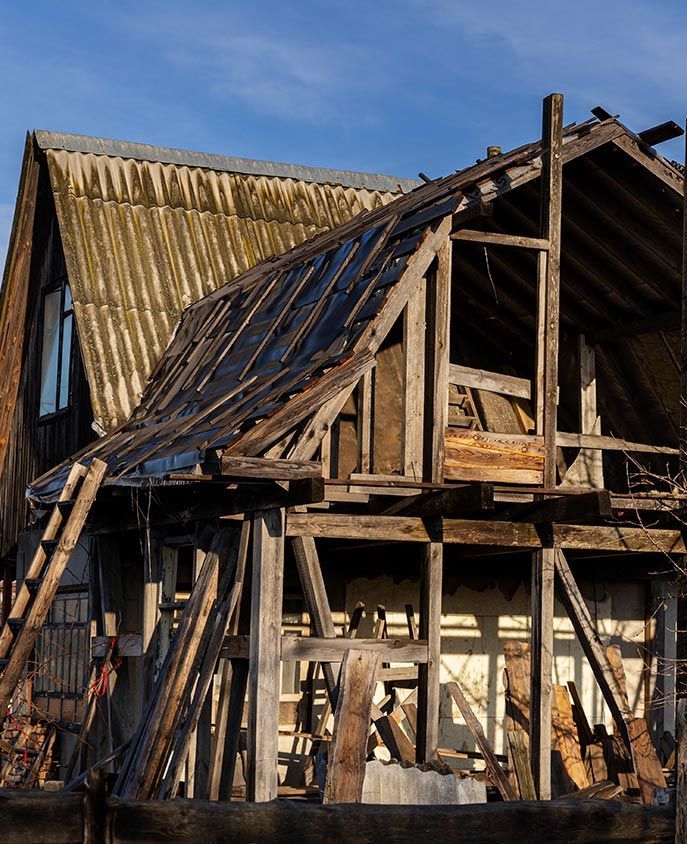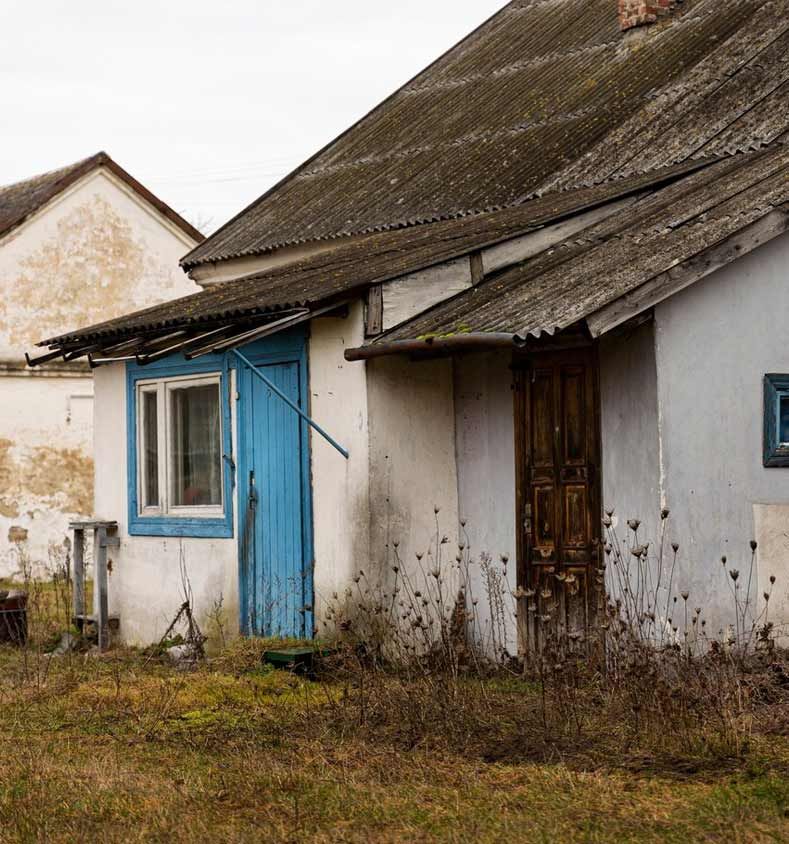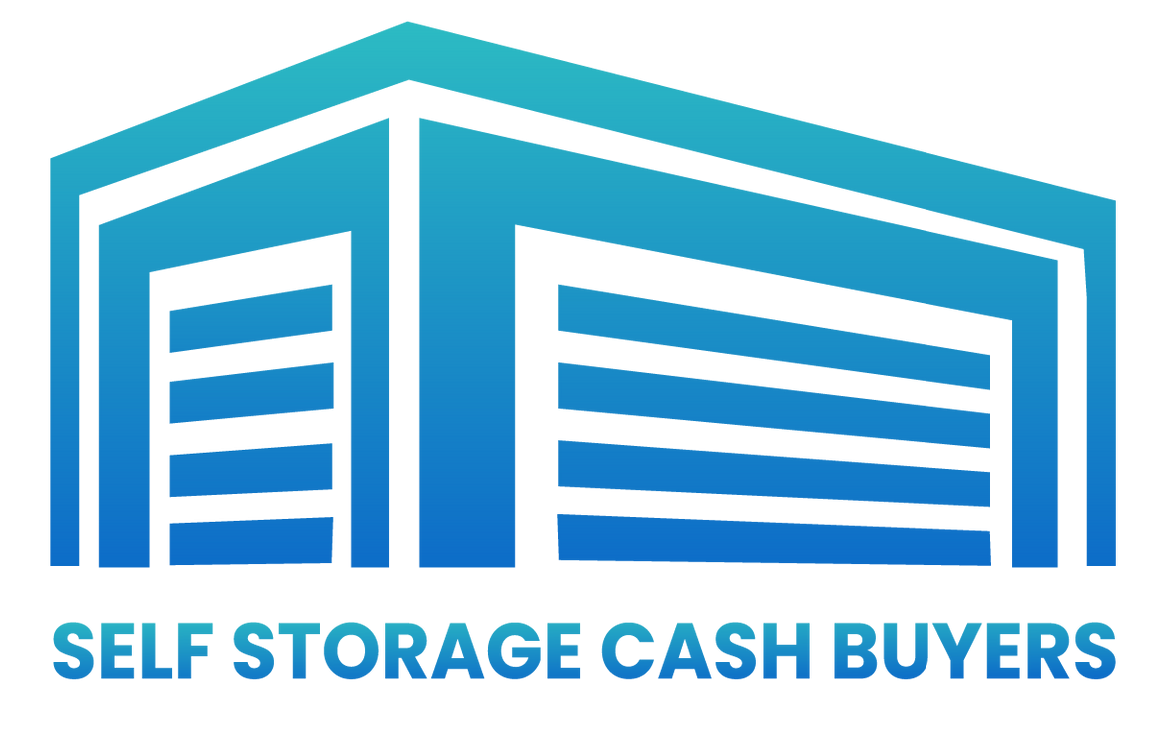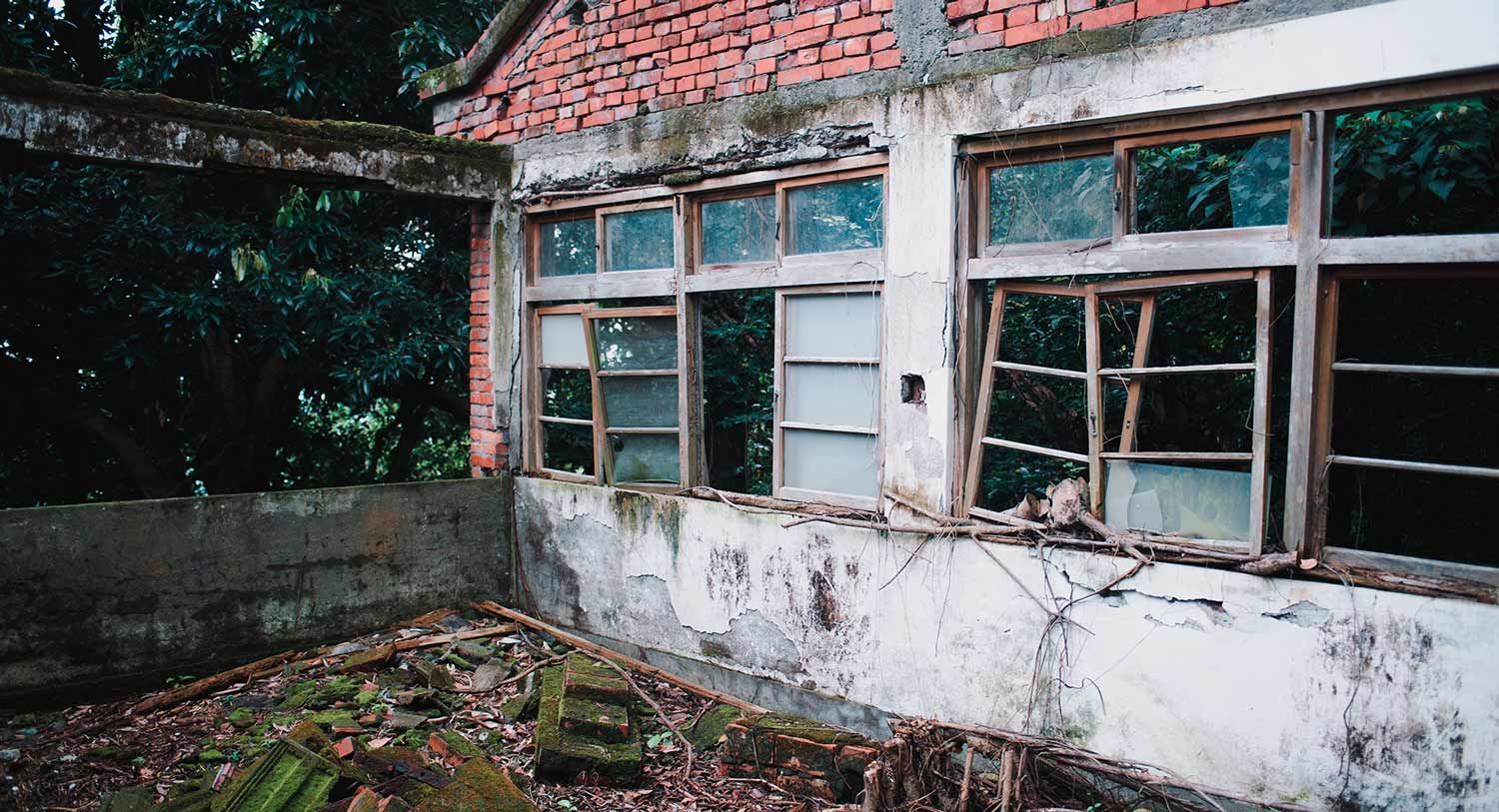How Much Does It Cost to Build a Self Storage Facility - Full Guide
Published on December 16, 2023
Nick Stevens
AUTHOR
Free Offer Form
Self-storage is a profitable business with broad appeal. It's popular because it offers a source of passive income and comes with low risks and is relatively recession-resistant.
If you're considering getting into the real estate business, you might ask, "How much does it cost to build a self-storage facility?"
To start with, building a single-story storage facility typically costs $25-$40 per square foot, while multi-story storage units can range from $40-$70 per square foot.
For an average storage unit of 45,000 to 50,000 square feet, expect to pay roughly $1.2 million to $3.5 million.
However, costs can vary significantly, so keep reading to get a more detailed breakdown of what goes into building a self-storage facility—including the major cost factors and how you can finance it.
Factors Affecting the Cost of Building a Self-Storage Facility
Building your own self-storage facility can be profitable, but success hinges on understanding the cost factors like land, construction, design, security, climate control, amenities, and more.
Like any business, understanding the cost factors is essential for smart decisions, strategic planning, and the overall success of the storage project.
For a better estimate of the overall cost to build, it's important to know that self-storage building costs are calculated according to the facility's square footage, or square feet.
Land and Location
In real estate and particularly in the self-storage sector, land choice and location are critical.
Land cost is a significant part of the total self-storage building costs and varies based on location and market rates.
Plus, they're particularly higher in major cities compared to rural areas, but building along a major road is a good strategy for visibility.
If that's not possible, choose a location close to a major road and use clear signage visible to passing drivers to attract customers.
To maintain a balanced budget for site development costs, limit land purchase expenses to 25-30% of the total cost of constructing a storage unit facility.
This ensures you'll have enough funds left over for the subsequent construction and development phases of the self-storage building.
Construction Costs
Building a single-story facility is typically less expensive than a multi-story storage facility due to lower material and labor costs.
Some of the most common construction materials used for self-storage units include steel, concrete, and wood. These materials are used for metal roofing, siding, insulation, doors, windows, and more.
Labor costs are also part of this factor and may be subject to union-regulated wages. You'll also need to consider the different types of storage units and lockers you'll be installing.
Additionally, site improvement costs like land clearing and drainage arrangements can add to the overall construction budget.
When weighing the development costs associated with building a new storage facility, it's imperative to factor in the option of considering buying an existing facility in the market.
Design and Layout
A good design is essential for maximizing your self-storage business, increasing revenue, and making it easy to run your facility.
Ask yourself questions like "How many units are you planning to construct?" and "Will it be a multi-story facility, or will it be a single floor dedicated to one size of container storage unit?"
Pay attention to design elements like multi-story, unit mix, or climate-controlled spaces, as they may cater to a premium market despite potentially higher operating expenses.
When planning your self-storage facility's design and layout, look up any local laws and permits or requirements you may need before beginning the construction. It's best to square those away now.
Your facility's design will also dictate your target audience, whether that's removal companies, college students, or businesses who need to store their inventory off the premises.
Always keep expandability in mind, ensuring your storage unit facility can grow in the future. Additionally, prioritize accessibility for customers with disabilities.
Security Systems
Incorporating advanced security systems into the design of your self-storage building impacts costs but can also assure a steady cash flow in the future.
By enhancing your self-storage facility's security, you can attract more potential customers.
To attract customers, try to fit in features like climate-controlled systems, 24/7 access, advanced security, and digital gate codes within the overall storage project cost.
Security cameras serve as deterrents and aid in criminal identification, alarms for break-in alerts, and access control systems to restrict facility and unit access.
Regarding physical security measures, your design should include units with corrugated metal walls, no windows, and individual locks controlled by the renter.
A typical self-storage building nowadays often has many security features that differentiate it from the competition, from automatic garage doors to advanced alarm systems.
You'll need to find a niche to stand out from the competition, which can also let you charge higher rental rates.
Climate Control Systems
Like automated security systems, adding climate control systems to self-storage facilities increases upfront costs.
These systems include heating, air conditioning, and ventilation, and the equipment needed varies based on the storage unit size.
Smaller storage facilities might use window-mounted units, while larger ones need a more advanced central air conditioning system.
To stay competitive in the self-storage industry and expect steady cash flow, embracing the latest technological advancements as other storage unit companies is crucial.
Office and Amenities
Make your storage unit facility stand out by investing in a welcoming reception area and convenient amenities.
Through comprehensive market research, identify amenities that resonate with your target market's needs.
For businesses, consider essential features like loading docks and packing supplies. You may also want to consider non-essential amenities for your employees' convenience.
It will raise your average operating cost, but will be worth it.
You could also tailor your offerings based on the current trends in the self-storage industry, like incorporating unit mix types, storage units, locker, container storage units, or warehouse storage.
You can complement your amenities with larger storage units designed for vehicles and outdoor storage for larger items like boats and RVs.
Any cost estimates should also include features like a kiosk machine or online software for your employees and tenants.
Cost Breakdown of Building a Self-Storage Facility
One of the first steps to start a self-storage business is making the substantial investment of building the facility. This can cost anywhere from $25-$70 per square foot, totaling $1.2-$3.5 million.
This is why estimating all associated costs, including land, construction, permits, legal fees, marketing, advertising, and operating costs, is important before starting your construction project.
Land Acquisition Costs
Self-storage units can generate the same income per square foot as medium-priced apartments in the same area, depending on location.
However, the land is usually the most expensive part of building a self-storage facility, and the cost can vary greatly from $1.15-$3.50 per square foot.
Typically, the cost of acquiring land should make up about 25-30% of the overall expenses for developing the project.
Nonetheless, the cost of land varies depending on the location, size, zoning, and proximity to other infrastructures.
Here is a sample cost estimate for a self-storage's site development costs.
- Location: Urban area
- Size: 45,000 square feet
- Zoning: Commercial
- Proximity to infrastructure: Close to a major highway
Cost estimate:
- Land cost: $150,000-$300,000
Construction Costs
So, "How much does it cost to construct self-storage units?"
The construction costs for a self-storage facility range from $4-$8 per square foot, which will mainly depend on the type of facility you want.
This covers the material costs plus the equipment, labor, and complexity of installing the individual storage units.
To estimate the construction cost for a 45,000 square feet self-storage facility with a range of $4.00 to $8.00 per square foot, you can use the following calculation:
- Low-end self-storage space estimate: $4.00/square foot X 45,000 square feet = $180,000
- High-end self-storage space estimate: $8.00/square foot X 45,000 square feet = $360,000
Therefore, the total construction cost for a storage unit facility of slightly over one acre would range from $180,000-$360,000.
TIP: You can also get detailed quotes from contractors and factor in potential cost overruns to create a realistic self-storage construction budget.
Permitting and Legal Fees
Permits and legal fees are essential for starting and running a self-storage business. Failure to comply can result in fines, delays, or even halting your storage unit construction.
Therefore, we also advise budgeting correctly for the legal and regulatory fees necessary to obtain permits and licenses for your self-storage business.
Here are some of the most common permits required for self-storage facilities.
- Business license: Starts from $50
- Zoning permit: Starts from $1,000
- Environmental permits: Starts from $1,000
- Building permits: Starts from $2,000
- Insurance: Starts from $3,000
REMEMBER: Hiring an attorney or a real estate agent to review your legal requirements is also necessary for self-storage construction.

Marketing and Advertising Costs
The average cost of promoting your self-storage business with marketing and advertising varies based on market size and chosen strategies, but it can range from $1,500-$5,000 per month.
A good marketing and advertising plan will help you attract and keep customers for your self-storage facility before and after it opens.
Some of the most common marketing and advertising strategies for self-storage facilities include:
- Online advertising (Web Optimization like Google Ads, social media, SEO)
- Print advertising (local newspapers and magazines)
- Direct mail campaigns
- Promotional items
- Referral programs
Operational Costs
Beyond the construction of your storage units, you'll need to consider any recurring operational costs.
This includes salaries, utilities, maintenance, security, and property taxes, which are essential considerations when figuring out how to effectively manage your storage facility's daily operations.
A typical operational cost budget for a self-storage facility can range from 25% to 35% of revenue, encompassing expenses for the following:
- Utilities: Water, sewer, gas, and electricity
- Maintenance and repairs: Painting, landscaping, and repairs to buildings and units
- Property taxes: Paid regularly to the local government
- Storage unit insurance: To protect against potential losses
- Payroll:
Salaries and benefits of employees
Financing Options for Building a Self-Storage Facility
With over 50,000 storage facilities in the United States, the industry shows strong growth to meet increasing demand.
However, starting a profitable storage business entails significant upfront costs. Apart from carefully considering the resale value, entrepreneurs should explore various financing options like the following.
Traditional Bank Loans
Traditional bank lending, or bank financing, is a common loan used for self-storage facilities to help stabilize operations until the storage unit business can generate consistent cash flow.
Bank loans offer relatively low interest rates and flexible terms, but monthly payments can be high. They can also be challenging to obtain, especially for new warehouse storage facilities.
Banks require a comprehensive business plan, collateral, and a strong credit history. Once approved, borrowers receive a lump sum of money they must repay with interest over time.
Consider a mortgage loan, for example.
In this case, the bank uses the house as collateral. If individuals fail to repay the loan, the bank has the legal right to take possession of the home to settle the remaining debt.
NOTE: The application process may take 1-3 months, so plan accordingly and be patient during the approval period.
SBA Loans
The U.S. Small Business Administration (SBA) offers SBA loans to help small self-storage businesses with startup costs, expansions, and more, depending on what your business plan requires.
You apply through a bank, and the government backs the loan, reducing the risk for lenders. After approval, the lender finalizes the loan, and you repay them monthly.
Here are some of the most common types of SBA loans you could get for your self-storage projects.
- SBA 504 Loan
The 504 Loan Program offers long-term, fixed-rate financing. Certified Development Companies (CDCs), SBA's local partners, provide these loans to support economic development in their communities.
- Amount: Up to $5.5 million.
- Purpose: Acquiring long-term assets like land or storage facilities.
- Usage: Buying, building, or renovating self-storage facilities.
- Terms: Fixed-rate, long-term financing for 10 or 20 years.
- Interest Rates: Typically, a 50% conventional first mortgage and a 40% SBA-backed second mortgage. The borrower contributes the remaining 10%.
- SBA 7(a) Loan
The SBA 7(a) loan program is the SBA's main loan program for small businesses. It provides loan guarantees to lenders, which means the government will repay the lender if the borrower defaults.
- Amount: Up to $5 million.
- Purpose: Working capital, expansion, and equipment purchases for storage facilities.
- Usage: Versatile—covers working capital, debt service, asset purchases, property buying, construction, and renovations of an existing facility or other establishments.
- Terms: Maximum 25 years.
- Interest Rates: Linked to the Federal Reserve prime rate, currently ranging 10.75%-13.25%
An SBA loan differs from a traditional loan because the government partially guarantees it. This results in higher loan amounts, lower interest rates, longer repayment terms, and reduced risk for lenders.
Private Investors
Private investors are a valuable source of funds for prospective self-storage facilities. These individuals or companies are interested in self-storage investing and have the funds to cover the construction cost.
They provide more flexibility and potentially more funding than traditional lenders but may expect a higher return on investment.
However, there are important considerations.
- Control Trade-Off: You might have to give up some control over your storage unit business as private investors may provide input on crucial decisions like pricing and expansion.
- Conflict Potential: Potential conflicts of interest may arise as private investors may have other business interests that could clash with yours.
- Higher Interest Rates: Private investors may charge higher interest rates, increasing the overall cost of financing your storage unit project.
Crowdfunding
Crowdfunding has become a viable financing option for real estate projects, including self-storage facilities.
Crowdfunding platforms allow many people to pool their money to invest in projects, even in small amounts. This is also a good way for individuals to invest in real estate.
Investors can invest as little as $1,000 or $2,500, much less than they would need to invest if they bought a property independently.
Crowdfunding in real estate was initiated by the Crowdfund Act in 2012.
While this democratizes investment opportunities, a well-structured campaign is essential to attract backers.
Although the self-storage unit business has joined crowdfunding later than other assets, it addresses funding challenges for investors and developers.

Frequently Asked Questions
Check this section for more insights on the cost of building self-storage units.
How Much Does It Cost to Build a Self-Storage Facility?
The cost of building a self-storage facility depends on various factors.
Typically, a single-story storage unit facility ranges from $25 to $40 per square foot, while a multistory facility varies from $40 to $70 per square foot.
For 45,000-50,000 square feet worth of storage units, the cost can be approximately $1.2 million to $3.5 million.
What Are the Factors That Affect the Cost of Building a Self Storage Facility?
Land and location, construction type, design and layout, security systems, climate control, and office & amenities are the key factors that affect the cost of building self-storage units.
Each factor contributes to the overall expenses, and their impact should be carefully evaluated in the planning phase.
1. Land and Location
- Location and land costs are the primary determinants of the overall construction cost.
- Varies based on geographic location and market rates.
- Strategic land selection enhances the visibility and accessibility of your storage units.
2. Construction Type
- Single-story vs. multistory facility.
- Also includes the price of materials like steel, concrete, wood, etc.
- Labor costs, subject to union-regulated wages, contribute to expenses.
3. Design and Layout
- The number of storage units and multi-story configurations impact costs.
- Consideration of premium market features may increase expenses.
4. Security Systems
- Surveillance cameras, alarms, and access control systems add to costs.
- It is crucial for safety but impacts both construction and operational expenses.
5. Climate Controlled Facility
- Heating, air conditioning, and ventilation contribute to upfront expenses.
- Landlords may charge more for rent to cover the cost of temperature-controlled spaces and increase profit margin.
6. Office and Amenities
- Adding a reception area and market-aligned amenities enhances the facility's appeal.
- Additional costs need to be factored into the budget.
How Can I Finance the Construction of a Self Storage Facility?
Financing options for self-storage units' construction include traditional bank loans, SBA loans (up to $5.5 million), private investors, and crowdfunding.
Traditional bank loans offer low interest rates but can be challenging to secure.
The government backs SBA loans, private investors provide flexibility with higher return expectations, and crowdfunding allows multiple small investors to contribute.
What Are Some Case Studies of Self-Storage Facility Construction Costs?
These case studies provide real-world examples of the costs of building self-storage facilities. This information can be used to develop more realistic and accurate estimates for your project.
It can also identify potential cost overruns and learn how to avoid them, keeping you on budget and completing your project on time.
"Costs for single-story Storage Construction typically range between $50-$65 per square foot – not including land or site improvement costs. Multi-Story Self Storage Building Costs have more variables and can range from $85 per square foot to as much as $110 per square foot . . . The architectural details and finishes can significantly impact cost. Land costs and site improvements will also impact your initial investment."
—MakoRabco, a prominent steel building supplier and construction company
"Operating costs for a multistory property are higher than for a traditional facility. This is primarily due to utility costs. For example, the electric bill is higher because the lights are on a great deal of time. There are also hidden costs, such as elevator repairs and maintenance agreements that are not incurred with a single-story property."
—Inside Self-Storage (ISS), an information source for self-storage businesses.
"To discuss site layout, let’s focus on single-story, as it would normally be easier and less costly for a first-time developer to build . . . The goal is to maximize the net rentable square footage. You need a site that’ll accommodate a minimum of 50,000 square feet, constructed all at once or in phases.
When determining the layout of the storage facility, factor in how many climate-controlled vs non-climate controlled units you’ll be able to fit within the site. Then ensure ease of access is accessible for all customers, from all entrances, to all units. If tenants are not able to easily drive to, unload, and reach their storage unit, they are likely to go elsewhere."
—Casey Development, LTD, self-storage facility developers in Texas
What Are Some Tips for Reducing the Cost of Building a Self Storage Facility?
Here are some tips for reducing the cost of building as well as the future net operating income and expenses of a self-storage business.
- To reduce land costs, choose land wisely and use efficient construction methods.
- Focus on crucial design aspects and opt for an affordable security or a climate-controlled facility.
- Plan amenities thoughtfully and negotiate competitive rates for construction and labor.
- Explore financing choices and seek expert advice for smooth regulatory navigation.
Conclusion
Success in business isn't only about making money; it's also about making wise decisions.
When starting a self-storage business, viewing it as a story is essential, where each cost factor plays a significant role in the plot.
The choice of land and its strategic location, construction type, design considerations, security, climate-controlled systems, amenities, and efficient financial planning all play pivotal roles.
Understanding these factors helps investors make smart decisions, avoid problems, and set the stage for a successful and profitable self-storage business.


